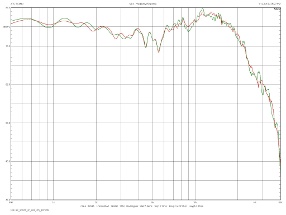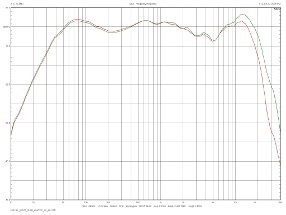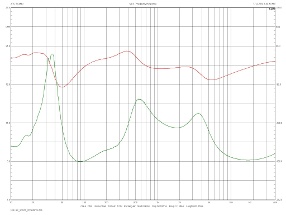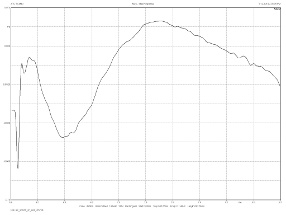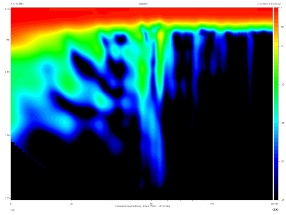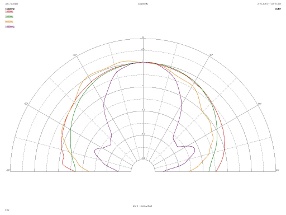about Audio, High Fidelity
& Home Entertainment technologies
pid: 607-2025/10/01 (v1.2)
Privacy Policy
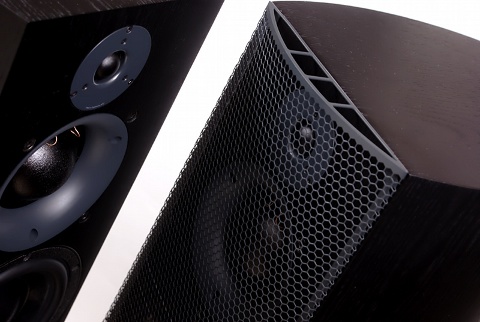
SCM40 quasi-anechoic frequency response (down to 500Hz) shows a loudspeaker with good pass band behavior, with only small amplitude deviations. The most interesting findings in the relevant graph are a decrease in sensitivity in the 2-7kHz region and an increase trend towards very high frequencies above 10kHz or so. Compared with the calculated average sensitivity the largest decrease occurs just above the 5.5kHz point (about -6.5dB) with a bandwidth clearly narrower than 1kHz. The bigger increase in sensitivity appears a little over the 11kHz point (3.4dB). The same graph (that does not include any smoothing) clearly shows that the role of the protective grill is significantly limited. Although one can see that there is some coloration introduced, of about 1dB (maximum) in the region between 5 and 10kHz, the choice of ATC is proved a correct one since this is a much better behavior compared to most grills.
Summed near-field response of the SCM40, obtained by splicing near field and far field quasi-anechoic measurements (including a 0.33oct smoothing), confirms the initial impression of a good pass band behavior. Average sensitivity, as calculated using values between 125Hz and 16kHz in one octave steps, is approximately 81dBSPL. This is lower than the 85dBSPL given by ATC, but keep in mind that the average method tends, more often than not, towards lower results anyway. This graph also gives a somewhat more general idea about the behavior between 2 and 7kHz as well as about the behavior of the tweeter. Bass alignment appears to be towards an accurate and neutral character with the region between 50 and 150Hz being just 1.5dB above the average sensitivity. Cut-off behavior at both ends of the spectrum is smooth with no visible acute dome resonance, at least up to 40kHz. Based on this graph and the average sensitivity, -6dB points are close to 35Hz and 22kHz for the low and high frequency part respectively. Of particular interest, finally, is the comparison between the on-axis and the off-axis horizontally and vertically averaged response. The two curves seems to differ significantly only above 7kHz and only in level terms, a finding that leaves some promises for a quite smooth off-axis behavior and is consistent with ATC's statements about their new tweeter.
Quasi-anechoic frequency response (dBSPL/2.83V/m) above 500Hz, measurement at 2m distance, with and without the protective grill (green and red curve, respectively).
Summed near-field frequency response (dBSPL/2.83V/m), far field/near field splicing, with 0.33oct smoothing. On-axis (green curve) and averaged on/off axis response (red curve).
Impedance measurements shows that the SCM40 is a well cared loudspeaker in terms of its behavior as a load to the amplifier. Minimum impedance magnitude at low frequencies is about 5.95 Ohm (at 90Hz), therefore the loudspeaker could be classified as an 8-ohm design. The total magnitude variation (around 14 Ohms) would suggest that an amplifier with a low damping factor could drive the SCM40 without some serious deviation in its frequency response. On the other hand, the rather low sensitivity seems to ask for some power and a low output impedance if one needs some serious SPL. Impedance phase variation is not of concern (the range is ±34 degrees with a slight capacitive behavior overall) therefore the amplifier power stage will not be burdened with large heat losses. Based on these data and sensitivity, if a listener needs to really exhaust the full potential of the SCM40, he needs to use a powerful amplifier to drive it but, also, one which will not be punished by overheating.
The step response of the loudspeaker is characterized by a rather smooth behavior. The design is not time aligned (something that happens with the vast majority of loudspeakers) but the delay between the tweeter and the midrange is very small. The transition from the tweeter to the midrange shows some slight discontinuity while the woofer's behavior during the decay part of the response is without significant problems.
The cumulative spectral decay graph shows a loudspeaker which is quite fast. Important findings here are a number of resonances around 5.5kHz with the one at 4.5kHz being the slower in decay time terms (2.3mS for a -25dBr decay), a resonance at 7.9kHz (1.6mS) and one at 15.3kHz (1.2 mS).
Finally, the polar response of the SCM40 confirms the first impression of a smooth off-axis character. Up to 8kHz the -6dB angle is greater than 60 degrees and only at very high frequencies (16kHz) the sound radiation lobe narrows significantly below this value. In practice, this means, that it is not necessary to toe-in the loudspeakers at least for every day casual listening (off-axis losses exist, but they are rather small). Moreover, the spectrum of the reverberation field the SCM40 creates could be smooth and complete, given a decent listening room. Based on these findings, the SCM40 can be listened to from both short and long distances without significant problems. Additionally, the listener has some freedom to fine-tune the feeling at high frequencies by choosing whether to rotate the loudspeaker towards the listening position (the averaged frequency response graph is probably more revealing of that option).
Cumulative Spectral Decay graph, on-axis, quasi-anechoic measurement.
Polar response diagram in the horizontal plane. Frequencies : 1kHz (red curve), 2kHz (green curve), 4kHz (gray curve), 8kHz (orange curve) and 16kHz (purple curve).

